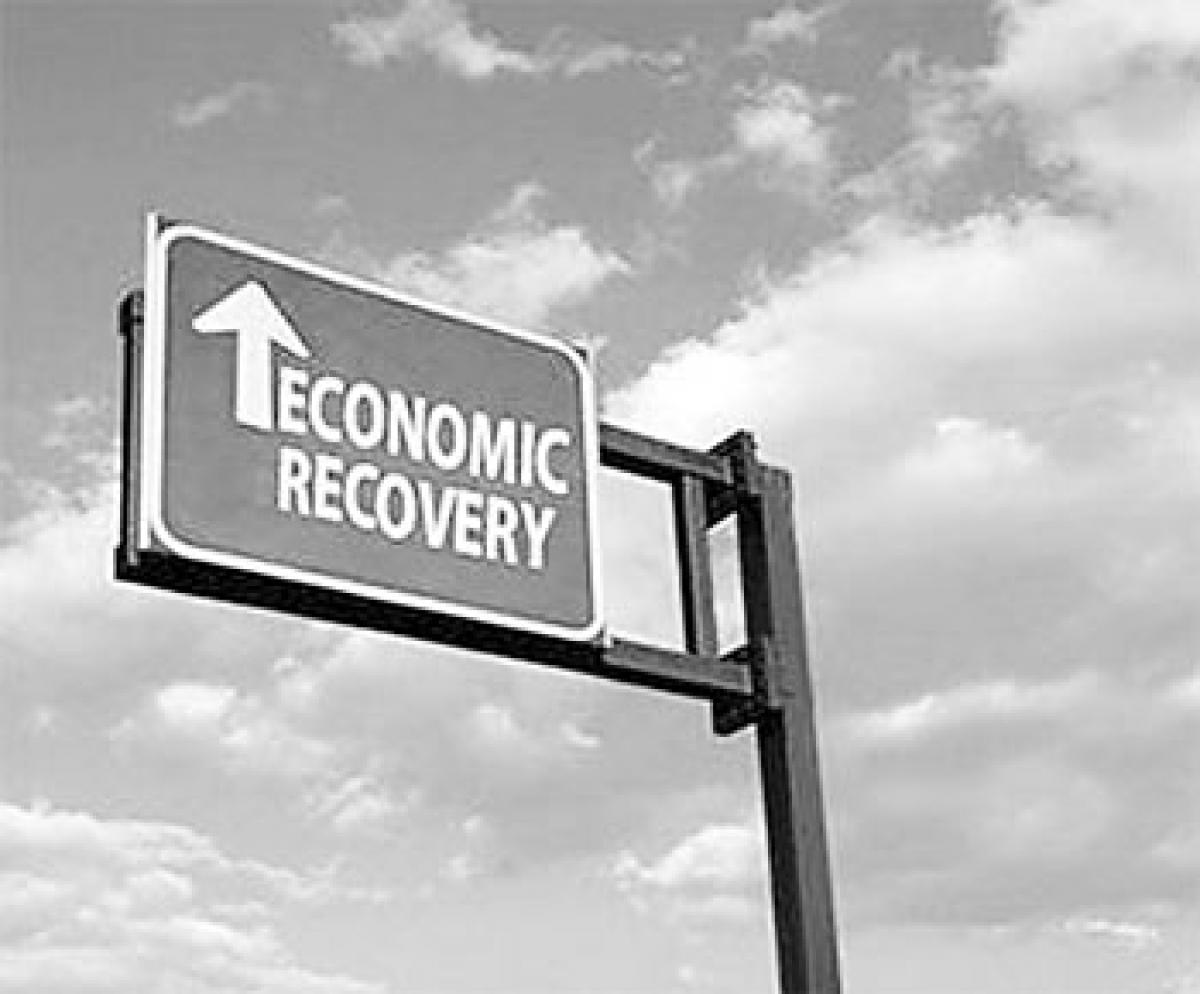Live
- Five arrested for stealing old ballot boxes
- Garena Free Fire MAX Redeem Codes for November 18, 2024: Get Free Skins & Rewards
- Special train to be run from Hubli to Sabarimala
- Customs officials nab culprits at airport
- If evidence is needed, SIT should be formed: R Ashok
- Seethakka consoles bereaved family
- Police bust chain-snatching gang in Chittoor
- Earth's Freshwater Supply Declining Rapidly: A Warning of Prolonged Droughts Ahead
- 2 nabbed, 3 pistols seized for extortion
- Kavi sammelan held as part of Library Week
Just In

x
Highlights
One of the key things in the governments to do list, and emphasised by Chief Economic Advisor (CEA) Arvind Subramanian in his mid-year economic review, is the passage of the Goods and Services Tax (GST) Bill. With the Congress-BJP stand-off continuing on this, its fairly certain that GST wouldnt happen in the winter session and will likely miss the April 1 rollout date.
 One of the key things in the government’s to-do list, and emphasised by Chief Economic Advisor (CEA) Arvind Subramanian in his mid-year economic review, is the passage of the Goods and Services Tax (GST) Bill. With the Congress-BJP stand-off continuing on this, it’s fairly certain that GST wouldn’t happen in the winter session and will likely miss the April 1 rollout date.
One of the key things in the government’s to-do list, and emphasised by Chief Economic Advisor (CEA) Arvind Subramanian in his mid-year economic review, is the passage of the Goods and Services Tax (GST) Bill. With the Congress-BJP stand-off continuing on this, it’s fairly certain that GST wouldn’t happen in the winter session and will likely miss the April 1 rollout date.
This is a political setback for the Narendra-Modi government since the passage of GST Bill could have reaffirmed the investor confidence. But with the bill now put on the back-burner it would now surely lead to questions on Modi’s very ability to keep his promises on the progression on the reforms front.
An all party-meet on Friday called by Rajya Sabha Chairman, Hamid Ansari, managed to get the opposition parties on board on passage of a few pending Bills in this session but minus the GST. But, beyond GST, the mid-year economic analysis by Chief Economic Advisor, Arvind Subramanian, is spot on a slew of critical aspects.
The report, while acknowledging that economy has indeed gained macro-economic stability, warns that weak corporate sector and investment scenario poses major threat to the economic recovery.
More critically, it raises some serious questions to both Finance Minister Arun Jaitley and Reserve Bank of India (RBI) Governor Raghuram Rajan on the course of fiscal and monetary policies in the context of the current challenges faced by the economy.
First, Should Jaitley stick to his fiscal deficit roadmap of 3.5 per cent by 2016-17 even when the nominal GDP growth is weak? Subramanian questions the logic of sticking to the strict fiscal deficit roadmap Arun Jaitley targets (3.9 per cent in fiscal year 2015-16 and 3.5 per cent in 2016-17) when there is a greater need for even more public spending to support the early recovery in the economy, especially in the context of weak private sector participation in the growth story.
The CEA acknowledges the improvement in public spending that has resulted in a 29 per cent growth in the real gross fixed capital formation in the first-half of the year, but adds that greater public investments that boosted demand was accompanied by fiscal consolidation that retracts demand.
In the backdrop of declining nominal GDP growth, Jaitley’s commitment to further reduce fiscal deficit by another 0.4 per cent (to 3.5 per cent by 2016-17) needs to be reassessed, the report says. Second, should the glide path of inflation targeting by the RBI be on a more flexible path when sizeable output gaps are present in the economy and the private sector is reeling under indebtedness? Again spot on.
“If output gaps have narrowed, core inflation is shaped by wage developments for skilled and unskilled services, whose supply elasticity is low, and the inflation glide path is to be rigidly observed, there will be little scope for further monetary easing. However, if low capacity utilisation and rapidly declining nominal GDP growth reflect the presence of sizeable output gaps, if private sector indebtedness and the attendant financial stability concerns are important, and there is scope for flexibly interpreting inflation targets and the glide path, the scope for easing remains,” the report says.
Third, Subramanian highlights the pressing need to carry out reforms to push the country to it high-growth trajectory. As mentioned above, the CEA cites passage of GST as a critical reforms step. “Supply side reforms will help restart the private investment cycle, notably through recognition and resolution of the balance sheet problems of firms and banks as well as creating a clean and favorable tax environment through implementation of GST and planned corporate tax reforms,” the report says.
“On aggregate demand, both fiscal and monetary policy stances will need to be carefully re-assessed, to ensure they strike the appropriate balance between the short-term need to spur demand, especially private investment and exports, and the longer-term needs of preserving fundamental macroeconomic stability,” the report says.
The CEA’s short-message is this: The economy isn’t yet on a firm recovery path. By lowering GDP growth targets for the fiscal year to 7-7.5 per cent in the current fiscal year from the earlier projected 8.1 per cent-8.5 per cent, and emphasising the hard challenges, it offers a more realistic picture on the economy and stresses the need for major booster doses from the fiscal and economic fronts.

Next Story
More Stories
ADVERTISEMENT
© 2024 Hyderabad Media House Limited/The Hans India. All rights reserved. Powered by hocalwire.com







